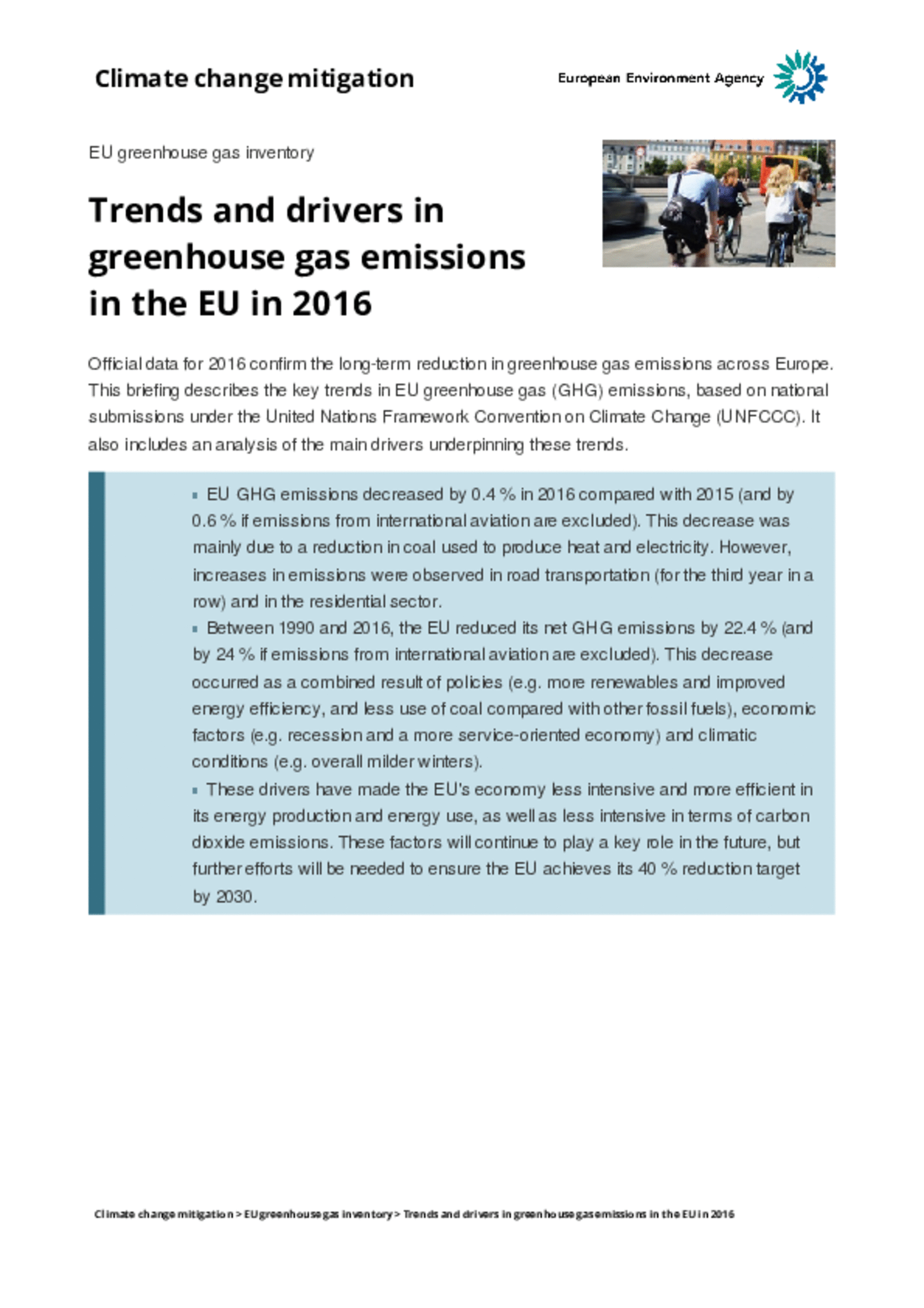All official European Union website addresses are in the europa.eu domain.
See all EU institutions and bodiesBriefing 5/2018
Official data for 2016 confirm the long-term reduction in greenhouse gas emissions across Europe. This briefing describes the key trends in EU greenhouse gas (GHG) emissions, based on national submissions under the United Nations Framework Convention on Climate Change (UNFCCC). It also includes an analysis of the main drivers underpinning these trends.
ISBN: 978-92-9213-964-3

